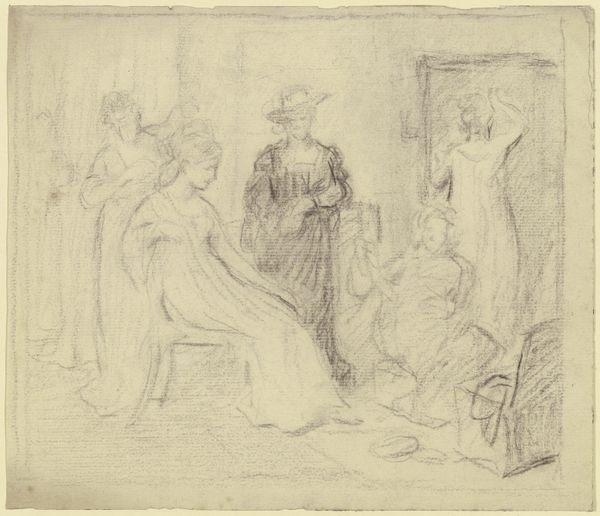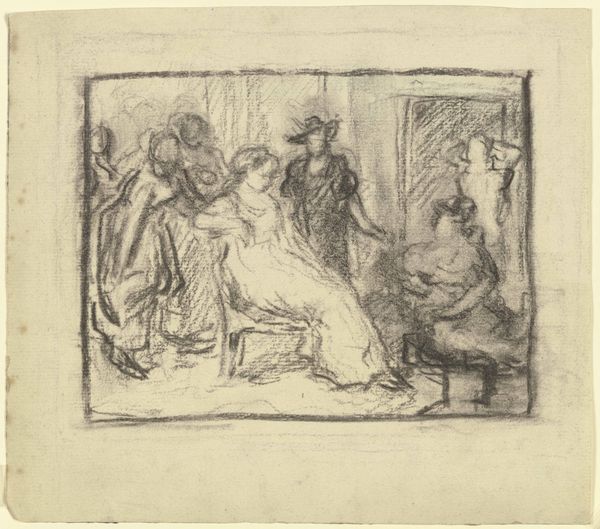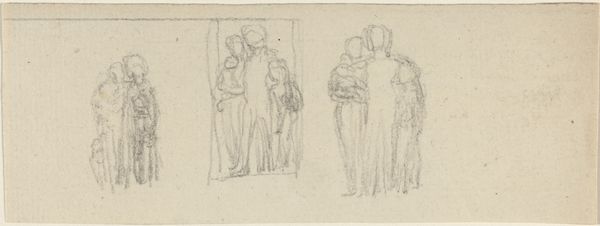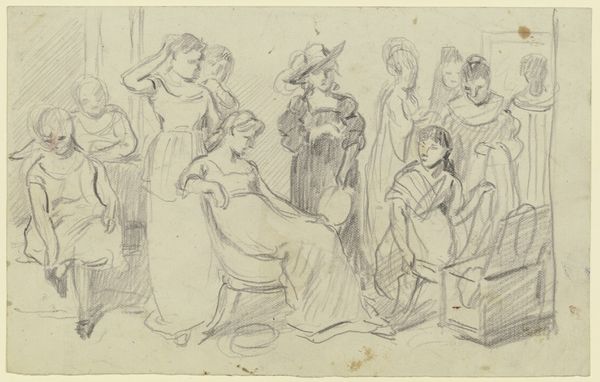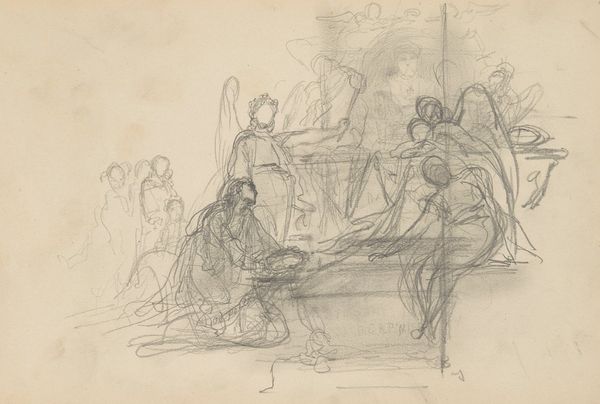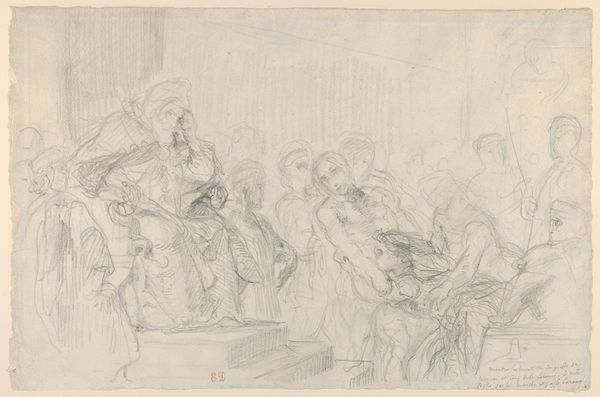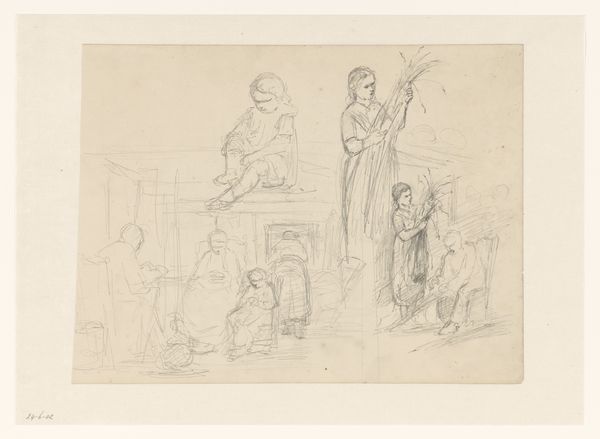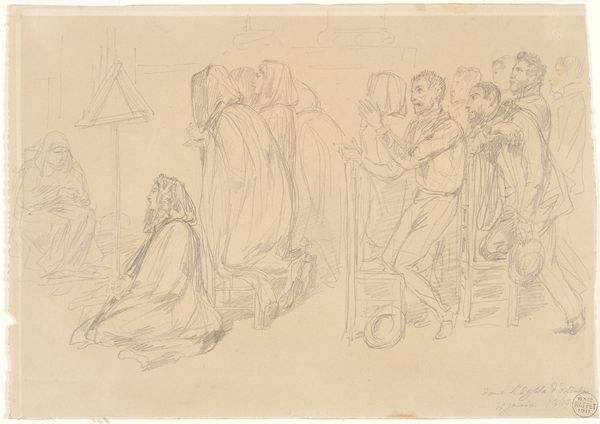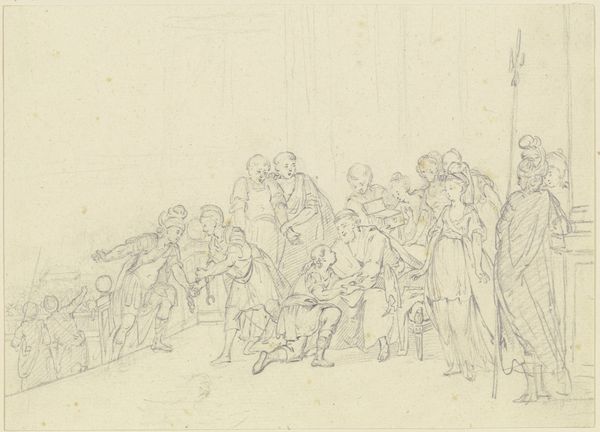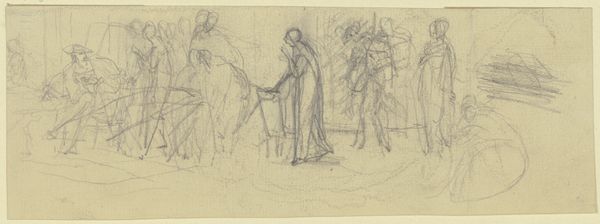
drawing, pencil, chalk
#
portrait
#
drawing
#
16_19th-century
#
figuration
#
german
#
pencil
#
chalk
#
academic-art
Copyright: Public Domain
Editor: This is "Vorbereitung zum Kostümball," or "Preparation for the Costume Ball," a drawing in pencil and chalk by Otto Scholderer, dating from around 1879 to 1880. It looks like a peek behind the scenes before a party. What stands out to you in terms of its artistic creation? Curator: I immediately consider the artist's labor, made visible through the very tentative and repeated chalk lines. These figures aren't just representations; they're the product of Scholderer's repeated efforts and the decisions embedded within each addition and erasure of line. Think about the availability and cost of materials like paper and chalk at that time. Did this influence the tentative, sketch-like quality? Editor: That’s interesting. I hadn't considered the economics of art-making itself. It's easy to forget that even drawings represent choices influenced by material realities. Curator: Exactly. Notice, too, the flattening of space, the ambiguity in how defined these forms are. Is it a comment on the social artifice inherent in a "Kostümball"? The looseness and unfinished feel almost challenges the tradition of polished Academic art, doesn't it? It opens up a fascinating question about what constitutes 'finished' versus 'labor in progress.' Editor: So you’re saying the materiality and the production methods almost *become* the subject, revealing a certain behind-the-scenes vulnerability. Curator: Precisely. The drawing becomes less about illusion and more about the act of making itself, highlighting the material conditions under which art, and perhaps even social rituals, are produced. Editor: I never would have looked at it that way. Thanks, I learned a lot! Curator: My pleasure. Looking closely at material traces always reveals hidden histories and questions.
Comments
No comments
Be the first to comment and join the conversation on the ultimate creative platform.

